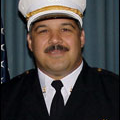Incident Review as an Instructional Method - Part II
Another adapted review technique that can be used as an instructional method is the Decision-Making Critique or DMC. The purpose of the DMC is to identify decisions and subsequent actions that went well and those that did not. Through a series of questions, the respondent is asked to identify any difficult decisions, consider any cues that might have been missed, disclose assessments of information that might have been wrong, and to reveal any uncertainties found and actions taken to address them (Pliske, McCloskey, Klein, 2001, p.44). The DMC tool is a recent development in the study of naturalistic decision-making. One of its original applications was as a tool for evaluating simulation-training exercises (DST-Decision Simulation Training) for squad leaders in the U.S. Marines Corps; DMC components can be employed to evaluate the decision-making processes of fire ground personnel.
A significant amount of information is available on the subject of Naturalistic Decision-Making (NDM) and its "founding father" Dr. Gary Klein. By definition, NDM is "the study of how people use their experience to make decisions in field setting." According to Klein, fire ground commanders will make 80% of their decisions in less than one minute (Klein, 1998. p. 1, p.4). Applying this information to our emergency scene decision-making, we can expect individual's experiences to be a major factor in determining the selected course of action when faced with time-pressure situations.
During the fall of 2003, I conducted a survey of Norfolk (Va.) Fire-Rescue officers to determine what they believed to be the most significant influence on emergency scene decision-making. The survey instrument, which was designed for anonymous responses, was delivered to 95 fire officers-from the rank of lieutenant to the Fire Chief. The results supported the idea that NDM was the most significant process used for emergency scene decisions.
As determined by the survey, 77% of the respondents said that the greatest factor used to make initial decisions was "experience". The next question addressed the factor involved when making revisions to the initial action plan and 67% of respondents again identified "experience" as the most influential factor. Of interest, for these two questions, only 6% and 13% of respondents, respectively, ranked "training" as a determining factor. When asked where emphasis should be placed for preparing firefighters for officer duties, 76% of the respondents replied "training" and only 7% replied "experience". When used as an incident review technique, the DMC tool can be considered a training device that will, if properly applied, improve decisions on subsequent responses.
The purpose of conducting an incident review is to evaluate performance, determine training needs and to provide instruction that will contribute to success on future incidents. In order to reach these benchmarks, the right incident review tool needs to be selected and implemented. Part 1 of this article discussed the PIA-Post Incident Analysis-process and Part 2 has introduced the DMC-Decision Making Critique. Select a review technique that is most appropriate for your needs and consistently apply that tool.
Shown below is a sample DMC questionnaire adopted from Decision Skills Training: Learning from Experience by Rebecca Pliske, Michael McCloskey, and Gary Klein as published in the text Linking Expertise and Naturalistic Decision-Making by Eduardo Salas and Gary Klein (2001).
Decision-Making Critique
- What were the tough decisions?
- For each decision, answer the following:
- Why was it difficult?
- Why did you choose that course of action?
- What one piece of missing information would have helped you the most?
- What other actions did you consider?
- Why didn't you choose them (other actions)?
- Questions for general discussion at the end:
- What would you do differently if you were in this situation again?
- What was our biggest weakness? What was out biggest strength?
- What are some important lessons learned from this experience?
Related:
References
- Klein, G.A. (1998). Sources of Power: How People Make Decisions. Cambridge, MA: MIT Press.
- Pliske, R., McCloskey, M., & Klein, G.A. (2001). Decision Skills Training: Facilitating Learning From Experience. In E. Salas & G. Klein (Ed.), Linking Expertise and Naturalistic Decision Making. (p. 44). Mahwah, N.J.: Lawrence Erlbaum Associates, Inc.
About the Author
